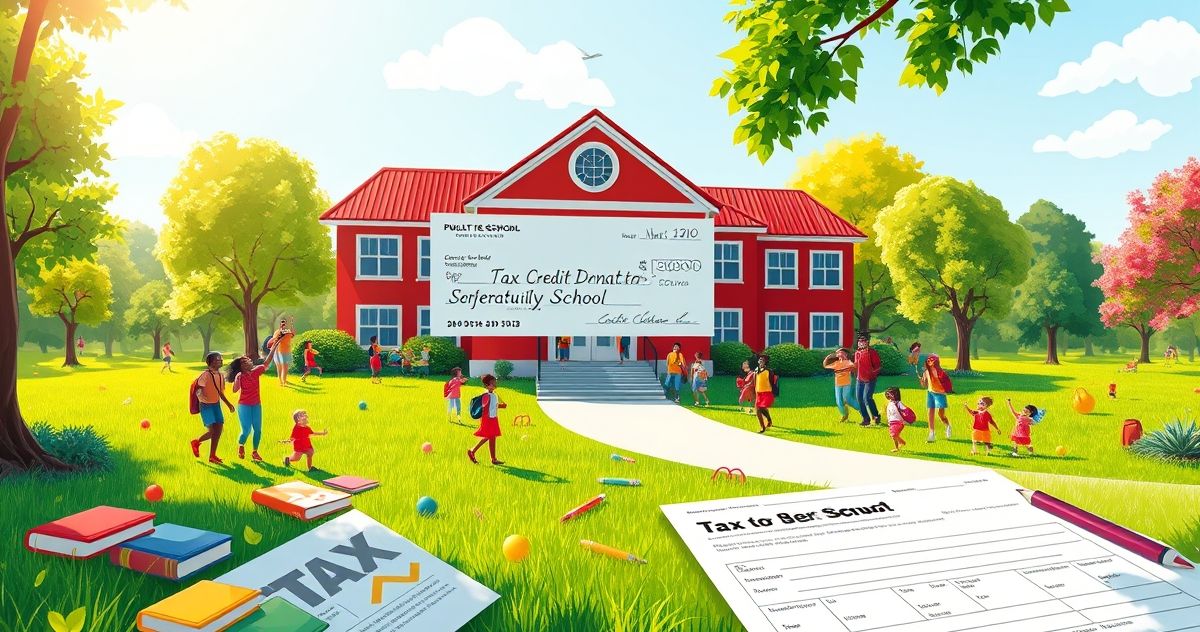What is Public School Contribution Credit?
The Public School Contribution Credit is an incentive provided by certain state tax systems that allows taxpayers to support public schools while simultaneously reducing their tax liability. By contributing to qualifying public educational institutions, individuals can claim a tax credit, effectively converting a portion of their state tax obligations into a donation to schools. The primary purpose of this credit is to enhance educational funding, involving taxpayers directly in the support of community education facilities.
Primary Purpose
The principal objective of Public School Contribution Credits is to provide an avenue for taxpayers to play a direct role in the funding of public school initiatives, thereby enriching educational resources available to students. This system not only boosts school budgets but also offers a tax-saving opportunity, encouraging more residents to channel their tax dollars more freely into the education sector.
Key Features or Components
This tax credit typically applies to donations made to eligible public schools within a given state. The credit is usually equal to a set percentage of the donated amount, subject to annual contribution limits established by state law. These donations can often be earmarked for specific purposes such as extracurricular activities, field trips, or special education programs, further aligning public support with community priorities.
1. Contribution Limits: States generally establish limits on the amount one can donate and claim as a credit each tax year. This ensures contributions are substantial enough to benefit schools but not so large as to excessively reduce state tax revenues.
2. Eligible Schools: Contributions must typically be made to public or charter schools that meet specific requirements as defined by state law. This ensures the credits bolster local educational systems.
3. Credit Percentage: While tax deductions reduce taxable income, tax credits such as this one provide a dollar-for-dollar reduction of tax liability, maximizing the financial benefit to the taxpayer.
Relevant Filing or Compliance Requirements
To claim the Public School Contribution Credit, taxpayers must adhere to certain filing requirements. These typically include:
- Receipt Submission: Taxpayers must include documentation of the donation, such as a receipt from the school, with their state tax return.
- Filing Deadlines: The contribution must often be made by the end of the tax year for which the credit is claimed. Adhering to deadlines ensures the credit can be applied without issue.
- Credit Forms: Most states require the completion of specific forms to claim the credit, detailing the donation made and the taxpayer’s information.
Penalties or Consequences for Non-Compliance
Failing to meet the compliance requirements could result in the denial of the credit on the taxpayer’s return. Inaccurate claims might lead to penalties, such as fines or interest charges on underpaid taxes if the credit is disallowed post-claim. In severe cases, repeated fraudulent claims could trigger broader audits on the individual’s tax affairs.
Importance or Significance
The significance of Public School Contribution Credits extends beyond individual tax savings. By directing potential tax payments into educational institutions, these credits exemplify how taxpayer involvement can have a tangible impact on public services—in this case, the quality and scope of educational offerings. This initiative supports school funding, directly impacting the quality of education, facilities, and resources available to future generations, while engaging the community in public school success.
Moreover, on a broader financial compliance level, such programs underscore the balance of taxpayer entitlements and responsibilities, urging citizens to partake actively in potential improvements to public systems they fund. These credits play a vital part in both personal tax planning and larger educational policy by ensuring that available public resources are utilized effectively and in line with constituents’ desires.
In conclusion, Public School Contribution Credits represent a meaningful intersection of civic responsibility and personal financial benefit. By understanding and utilizing these credits, taxpayers can play a vital role in enhancing public education while enjoying a reduction in their state tax liabilities.

